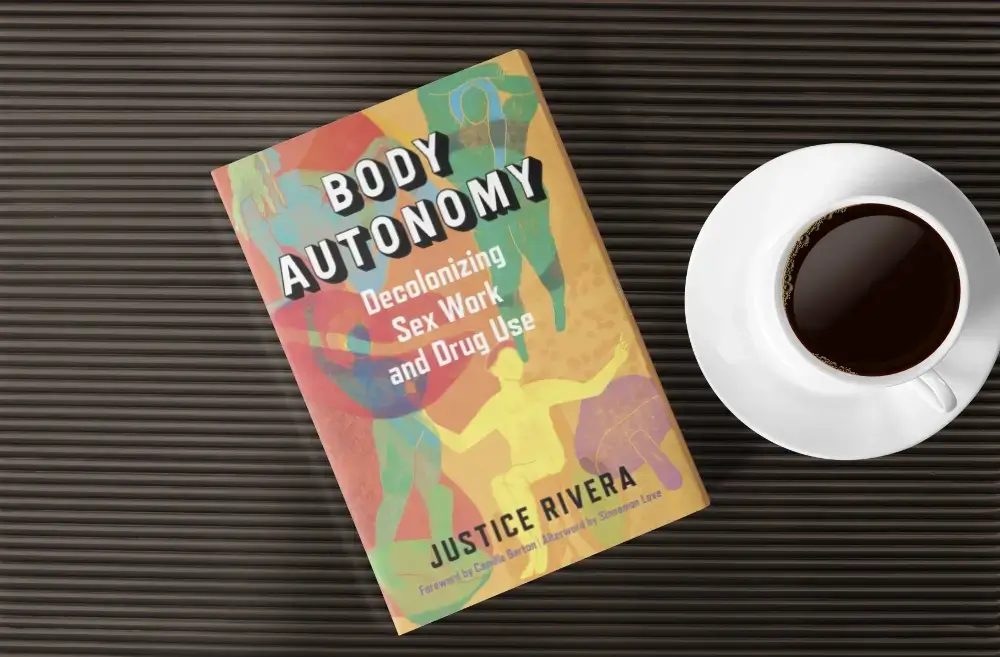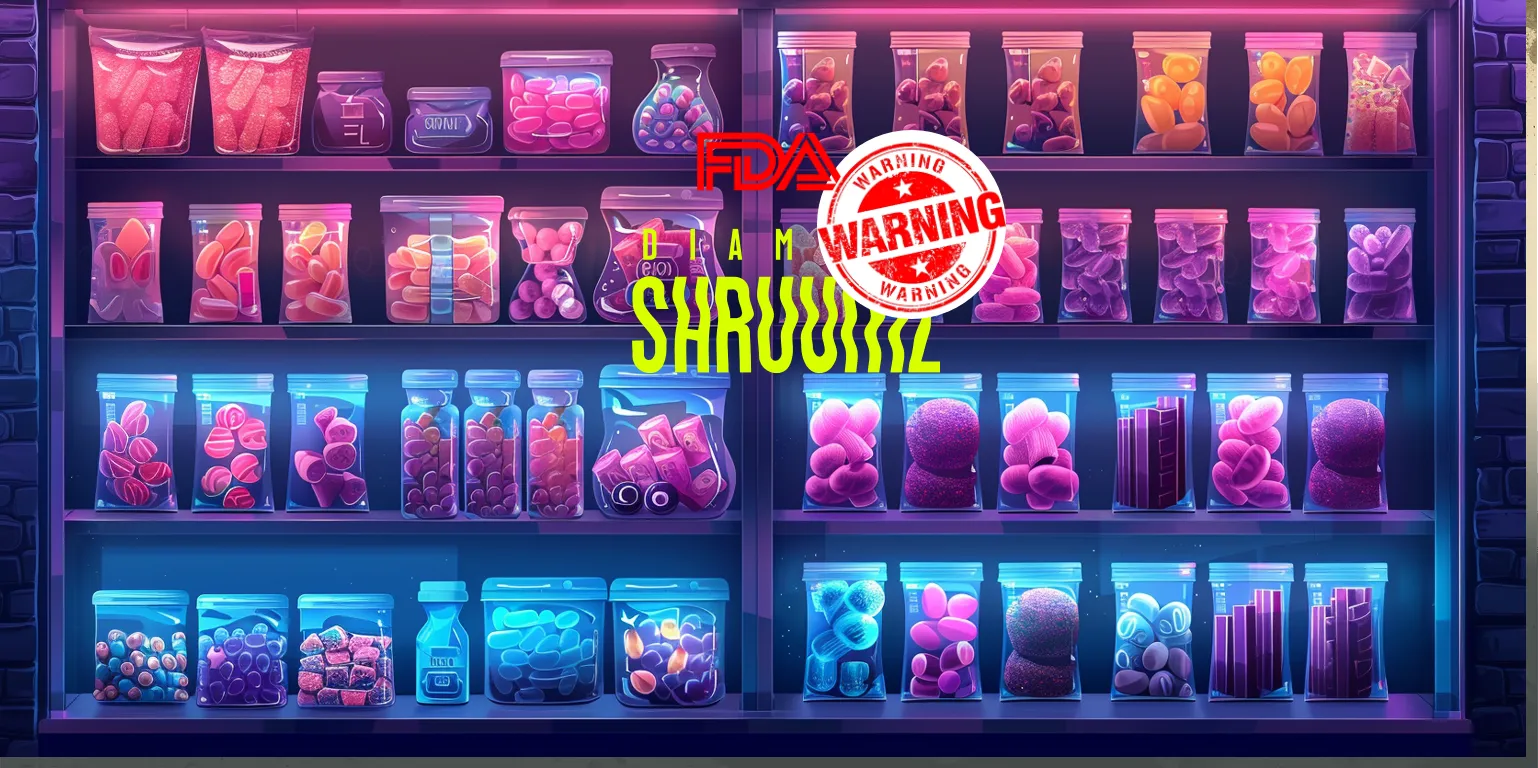Justice Rivera has led the kind of life that some of us can only imagine. As someone who experienced a difficult childhood and who often had to deal with the fallout of generational trauma, Justice began writing short fiction stories at an early age. As she puts it, she was “writing myself into a future of my own making.” Her writing would help her thrive and grow after a history of “chaotic drug use, homelessness, exploitation, and incarceration.”
Justice began her career in Denver, Colorado, as an outreach worker and community organizer with Prax(us), working with the unhoused population, where she would become Co-Director. She served on the Colorado Criminal Justice Reform Coalition board before moving to Washington, D.C., to continue growing professionally and advancing her advocacy experience as the inaugural Drug User Health Fellow at the National Alliance of State and Territorial AIDS Directors. Justice has also served on the board of the Sex Workers Outreach Project USA, co-founded Reframe Health and Justice, a safe space for queer and trans community activists, and was awarded the 2019 Open Society Foundation Soros Justice Media Fellowship.
Their new book, Body Autonomy: Decolonizing Sex Work & Drug Use, tells readers the real costs of the failed war on drugs and the new war on trafficking and how these policies have created untold grief and harm to her fellow Americans and people around the world. Justice also details the often overlooked price of prohibitory U.S. drug and human trafficking policies on a global scale and the rising cost of criminalizing sex work.

Body Autonomy: Decolonizing Sex Work & Drug Use
After several years of working in nonprofit agencies that take a harm-reduction approach to working with drug users and sex workers, I’ve observed many similarities between the war on drugs and the war on trafficking. As the drug war has lost popularity, the war on trafficking has gained momentum. Both the war on drugs and the war on trafficking are housed within the criminal justice system, operating through punishment and incarceration. Both wars seek to eliminate their abstract opponents by attacking communities of drug users and sex workers, composed mainly of poor people of color.
Keep Up with Uncensored Psychedelic Trends
Join our newsletter at Psychedelics Uncensored.
We respect and protect your privacy. By subscribing your info will be subject to our privacy policy . Unsubscribe easily at any time

Increased Sanctions
One way in which both the war on drugs and the war on trafficking operate is through the use of increased sanctions. The criminal justice system imposes harsh penalties on drug and sex related crimes, which in turn leads to mass incarceration, blocking upward mobility for those targeted. The best known example of this phenomenon is the crack versus cocaine disparity. This discrepancy punishes crack cocaine users, most commonly Black people, with mandatory minimum sentencing many times longer than convicted powder cocaine users, most commonly white people, for an equivalent amount of what is chemically the same drug. This sentencing guideline continued for twenty-five years until Congress passed the Fair Sentencing Act of 2010. The Act did not eliminate the disparity between sentences for crack and cocaine trafficking, but it did reduce the crack versus cocaine sentencing ratio from 100:1 to 18:1. It also eliminated the mandatory minimum sentence for crack possession.(1)
In 2015, President Obama signed the Justice for Victims of Trafficking Act. As the Anti-Drug Abuse Act did with drug charges, this piece of federal legislation created mandatory minimums for trafficking-related charges. The California state legislature passed comparable anti-trafficking legislation in 2013, and states across the nation are now adopting similar laws. California’s Proposition 35 increases police surveillance of the sex trade and funnels money and resources into the criminal justice system rather than to victims of trafficking and service providers by redefining crimes and increasing penalties.(2)
As Melissa Gira Grant observes, Prop 35 is overly broad, defining trafficking in a way that could potentially target anyone involved in the sex trade. Prop 35 also increases penalties for trafficking-related charges to include large fines of up to $1 million, prison sentences ranging from 5 years to life, and sex offender registration. As a result of Prop 35 and similar legislation, sex workers are often charged with trafficking in addition to prostitution when they engage in consensual adult sexual encounters for money. Last year, I met with a 20-year-old woman who’d been charged with pandering (a third-party charge that is essentially assistant pimping or arranging prostitution) as well as prostitution because she worked in solidarity with a 17-year-old; she’d formed this partnership with her coworker without knowing she was underage to keep them both safe.(3)
Another notable sanction that both the war on drugs and the war on trafficking use as a tool of control and punishment is asset forfeiture, which often occurs during drug raids and prostitution stings. By law, when police officers perceive a person’s belongings are involved in a crime, they seize the item and sell it. Police seize cash, cars, and homes. Impound companies charge fines for holding vehicles, and many sex workers, sex work clients, and drug users do not have the means to get their cars out of impound lots. What ends up happening most of the time is that law enforcement agencies sell the impounded cars, keep the money, and = use those funds to make more drug and prostitution-related arrests.(4, 5)
Safety Supplies Become Paraphernalia
Drug paraphernalia is illegal in many states, and possession carries different penalties depending on which drugs they are meant to be used with. For example, a marijuana pipe often triggers a ticket and a fine, while a syringe triggers several days in county jail, including a booking fee. Police officers use paraphernalia as probable cause to search a person for drugs. Many people do not know their rights, and police will often use paraphernalia to justify a search of their environment as well as their person, despite actually needing a warrant to conduct such searches.
Similarly, condoms are considered evidence of prostitution in some jurisdictions, either by law or in practice. In 2013, New York reformed a law that established possession of more than three condoms as evidence of prostitution. Opponents of the law stated that criminalizing condoms is bad public health policy because it discourages people from carrying and using condoms. Despite the law’s reform, police still threaten to use condoms as evidence when arresting someone they perceive as a sex worker in an attempt to get them to admit guilt. During Know Your Rights trainings, which the last organization I worked at provides to sex workers, participants would often tell me that the officer who arrested them stated that possession of so many condoms was probable cause for a prostitution arrest. But that “evidence” was not formally submitted on their ticket because the law in Colorado does not actually recognize condoms as evidence. Such practices push drug use and sex work, as well as sex trafficking, underground, creating more violence and isolation by depriving people of the means to reduce risks in their drug use and sex work.(6, 7)
Keep Up with Psychedelic Trends
Get uncensored psychedelic news, events, and updates. Join Psychedelics Uncensored!
We respect and protect your privacy. By subscribing your info will be subject to our privacy policy . Unsubscribe easily at any time
Federal Funding Bans
In 1988, Congress placed a federal funding ban on needle exchange in the Public Health and Welfare Act. No federal dollars could be used on this highly effective HIV prevention intervention until 2009, when the Obama administration and Congress removed the ban in the appropriation process. Two years later, it was added again as an appropriation rider. Then, in 2016, after over 200 mostly white injection drug users in rural Indiana contracted HIV, a mostly Republican Congress relaxed the ban. At the time this article was updated in 2022, a ban on funding needles still existed. However, current language allows for federal money to be spent on staff, infrastructure, and other supplies at syringe access programs.(8, 9)
Federal funding bans extend beyond limiting organizations’ sustainability and growth to imperiling individual health and prosperity. People with drug felonies and sex offenses are denied access to federal assistance, including food stamps and Section 8 housing. This creates a cycle of release and reincarceration as felons are not able to meet their basic needs after re-entering society. People with drug and prostitution-related charges on their records often return to the street economy in order to take care of themselves and their families, violating their parole/probation and sometimes catching additional charges. Tax payers’ dollars are spent funneling people in, out, and back into jails and prisons rather than helping people with felonies become stable.
In 2003, the President’s Emergency Plan for AIDS Relief (PEPFAR) created national and international strategies aimed at ending the AIDS epidemic. PEPFAR imposes bans on federal funding dollars to syringe exchange programs, as well as organizations that support the decriminalization of prostitution, limiting the impact that harm reduction agencies can have on preventing the spread of HIV/AIDS. Such funding restrictions also impede community-based organizations’ ability to provide sexual health services and education to drug users and sex workers.
In 2013, The American Foundations for AIDS Research (amfAR) released a fact sheet calling on the federal government to lift these bans (amfAR, 2013). The fact sheet outlines how lifting federal funding restrictions on syringe exchanges and sex worker-positive organizations would be more cost effective to the U.S., as harm reduction and prevention are significantly cheaper than providing health care to people with HIV. One syringe costs an organization 10 cents, whereas viral treatment costs thousands of dollars over a lifetime. In 2013, the U.S. Supreme Court found the anti-prostitution pledge to be unconstitutional. However, the federal government still withholds its funding dollars from sex worker-positive organizations, directing them towards abstinence-based organizations instead.(10, 11)
Disproportionate Effects on Marginalized Communities
Michelle Alexander (2010), author of The New Jim Crow, a primer on racial disparity in the drug war, writes that “[a]ny movement to end mass incarceration must deal with mass incarceration as a racial caste system, not as a system of crime control.” The 13th Amendment of the US Constitution states that slavery is illegal except as punishment for a crime. But after slavery was outlawed, many states adopted Jim Crow laws, perpetuating the mass arrest of Black men in order to utilize their prison labor. Shortly after Jim Crow laws were overturned, the war on drugs began, and it continues to do the work Jim Crow laws did by incarcerating huge numbers of Black men.(12, 13)
Dr. Carl Hart, a neuroscientist who specializes in debunking drug war myths, writes about the role that media sensationalism plays in perpetuating drug war hysteria. Anti-meth ads show extreme cases of meth use and declare that all meth use looks like that. In fact, that is what extreme sleep deprivation and malnutrition look like. Anti-trafficking ads also use sensationalism to incite pity and fear in the American public. Foreign children are shown trapped in cages despite the fact that traffickers use fraud and coercion much more commonly than force. Lurid images like these do little to educate anyone about the nuances of drug use and trafficking in the sex industry, but they do plenty to affirm people’s existing prejudices.
Media attention surrounding the war on trafficking warns American parents to keep close watch on their children and stay wary of men of color. This is reminiscent of media surrounding the war on drugs in the 1980s and 1990s. During the ’80s, the spotlight turned to Black men and welfare mothers, ignoring drug use in suburban white neighborhoods. Law enforcement shifted most of its resources to monitoring poor inner-city neighborhoods. This colored portrayal of drug use led to the imprisonment of high rates of Black people in America, much higher than any other race. The media also promotes racial stereotypes of sex workers and sex trafficking victims. Law enforcement uses racial profiling when arresting Black female sex workers and “saving” white young women in the sex trade. Thus, poor women of color are arrested and incarcerated at much higher rates for prostitution-related crimes. Instead of being treated with compassion, sex trafficking survivors are often arrested, criminalized, and mistreated by the criminal justice system. Even attempts at diversion—treating sex workers as “victims” instead of “criminals”—usually leave workers with open records and still conduct them through the criminal justice system, which leads to deportation for migrant trafficking victims.(14, 15, 16)
Creating the Case For a Brighter, More Inclusive World

In Body Autonomy: Decolonizing Sex Work & Drug Use Justice endeavors to showcase the dark realities of policies that have long shadowed our society. Her personal and professional journey has been about unmasking the injustices embedded within these wars and presenting a candid narrative of the countless lives damaged by overly punitive and fear-based policies, most of which are relics of the failed War on Drugs and a rapidly growing war on trafficking. Justice adeptly weaves a compelling narrative using stories and statistics that reveal a pattern of systemic discrimination and harm, disproportionately impacting marginalized communities.
Throughout this book, we see how the war on drugs and the war on trafficking, despite their purported goals of safety and protection, have instead perpetuated cycles of trauma and exclusion. From harsh sentencing disparities to the weaponization of paraphernalia laws, these policies have done more to criminalize than to heal. The intersection of race, poverty, and gender is undeniable, painting a picture of a justice system more focused on punishment than on rehabilitation, harm reduction, the public good, or human understanding.
As we close this chapter, it’s crucial to recognize that the battle against these injustices is far from over. The voices of those impacted must be heard and amplified. Reform is not just a matter of policy change; it’s about a shift in perspective, where empathy and evidence-based approaches replace stigma and sensationalism. “Casualties of War” is a call to action – to rethink, reform, and rebuild. Justice shows us that it’s time to move away from punitive measures and towards a society that values all its members, one that provides support, dignity, and a path to healing. Our collective future depends on our ability to learn from these lessons and forge a more just and equitable path forward.
As Justice has shown, we can all write ourselves into “futures of our own making” – one where equality under just law, understanding, and compassion are the guiding principles in our continued fight against the casualties of these unending wars on human nature.
If you’d like to read the full book, it can be purchased directly from Synergetic Press.
Sources

1. Alexander, M. (2010). The New Jim Crow: Mass Incarceration in the Age of Colorblindness. The New Press.
2. amfAR. (2013, February 27). End the Ban: Help Us End the Ban on the Use of Federal Funds for Syringe Services Programs! In the Community. Retrieved from https://www.amfar.org/articles/in-the-community/2013/end-the-ban/.
3. Arizona State University, Watts College of Public Service and Community Solutions. (2022, February 3). Asset Forfeiture. Retrieved from https://popcenter.asu.edu/content/asset-forfeiture-print-full-guide.
4. Diamond, J. (2018, March 1). NYC Trafficking. Red Umbrella Project (blog). Retrieved from https://redumbrellaproject.org/advocate/nyhtic/.
5. Families Against Mandatory Minimums. (2012, April 26). Mandatory Minimums in a Nutshell. Retrieved from https://famm.org/wp-content/uploads/FS-MMs-in-a-Nutshell.pdf
6. Fisher, M. (2012, February 7). A History of the Ban on Federal Funding for Syringe Exchange Programs. Center for Strategic and International Studies. Retrieved from https://www.csis.org/blogs/smart-global-health/history-ban-federal-funding-syringe-exchange-programs.
7. Global Alliance Against Trafficking in Women. (2007, December 18). Collateral Damage: The Impact of Anti-Trafficking Measures on Human Rights around the World. Retrieved from https://gaatw.org/Collateral_Damage_Final/singlefile_CollateralDamagefinal.pdf.
8. Grant, M. G. (2012, November 7). Trafficking from the Top Down: Why Prop 35 Passed and What It Means. Melissa Gira Grant (blog). Retrieved from https://melissagiragrant.com/trafficking-from-the-top-down-why-prop-35-passed-and-what-it-means/.
9. INCITE!. (2011, April 22). No Simple Solutions: State Violence and the Sex Trades. Retrieved from https://incite-national.org/2011/04/22/no-simple-solutions-state-violence-and-the-sex-trades/.
10. Lind, D. (2016, March 28). How Police Can Take Your Stuff, Sell It, and Pay for Armored Cars with the Money. Vox. Retrieved from https://www.vox.com/2014/10/14/6969335/civil-asset-forfeiture-what-is-how-work-equitable-sharing-police-seizure.
11. Peláez, V. (2008, March 10). The Prison Industry in the United States: Big Business or a New Form of Slavery? Global Research. Retrieved from https://www.globalresearch.ca/the-prison-industry-in-the-united-states-big-business-or-a-new-form-of-slavery/8289.
12. Sex Workers Project. (n.d.). New York State Assembly Bill S1379/A2305. Retrieved from https://sexworkersproject.org/campaigns/2011/new-york-condom-bill/
13. Steiker, C. S. (2013). Lessons from Two Failures: Sentencing for Cocaine and Child Pornography Under the Federal Sentencing Guidelines in the United States. Law and Contemporary Problems, 76, 27–52. https://scholarship.law.duke.edu/lcp/vol76/iss1/32
14. Rogers, H., & Raymond, D. (2016, January 8). Congress Ends Ban on Funding for Needle Exchange Programs [Interview by A. Cornish]. All Things Considered. NPR. Retrieved from https://www.npr.org/2016/01/08/462412631/congress-ends-ban-on-federal-funding-for-needle-exchange-programs?t=1700486108745.
15. Wurth, M. H., Schleifer, R., McLemore, M., Todrys, K. W., & Amon, J. J. (2013). Condoms as evidence of prostitution in the United States and the criminalization of sex work. Journal of the International AIDS Society, 16(1), 18626. https://doi.org/10.7448/IAS.16.1.18626
16. Zen, K. (2013, June 20). Lonely Little Red Umbrella: Sex Workers’ Rights in the Anti-Prostitution Loyalty Pledge Hearing. Tits and Sass. Retrieved from https://titsandsass.com/lonely-little-red-umbrella-sex-workers-rights-in-the-anti-prostitution-loyalty-pledge-hearing/.
This material is not intended as a replacement or substitute for any legal or medical advice. Always consult a medical professional about your health needs. Psychedelics are widely illegal in the United States, and readers should always be informed about local, state, and federal regulations regarding psychedelics or other drugs.

 Justice Rivera
Justice Rivera David Connell
David Connell


